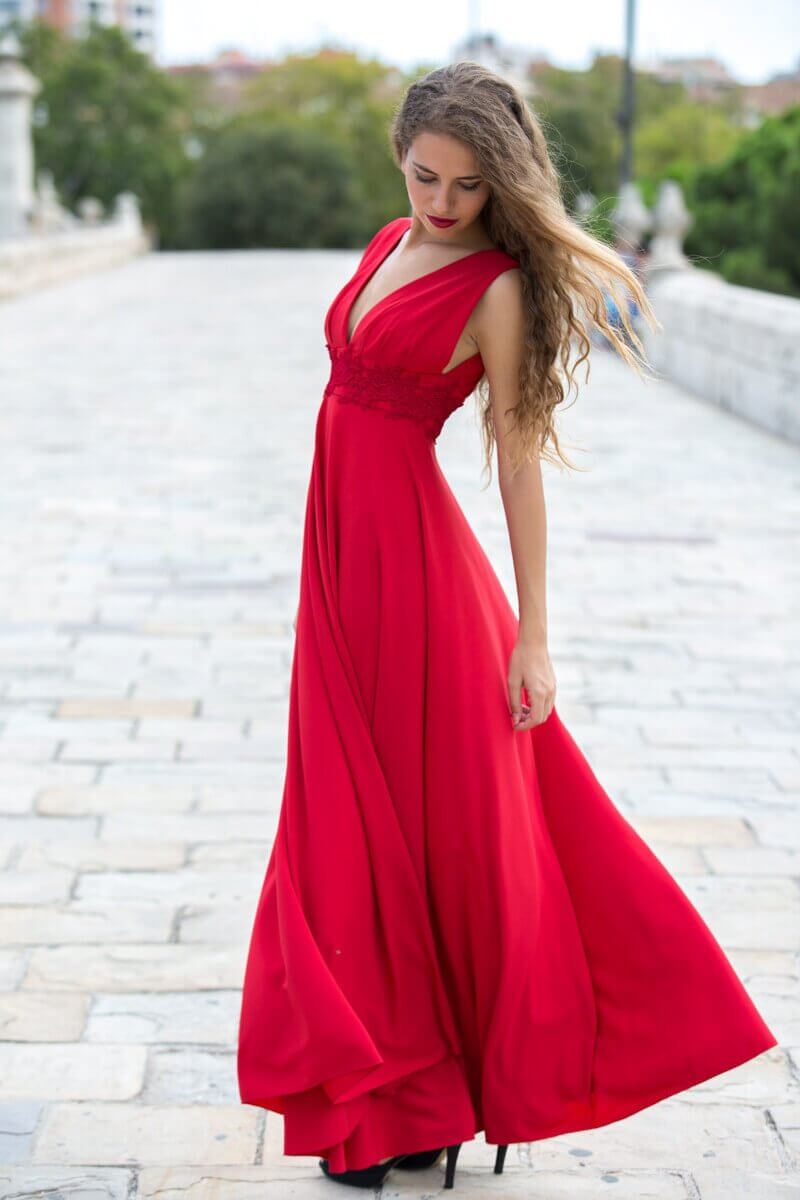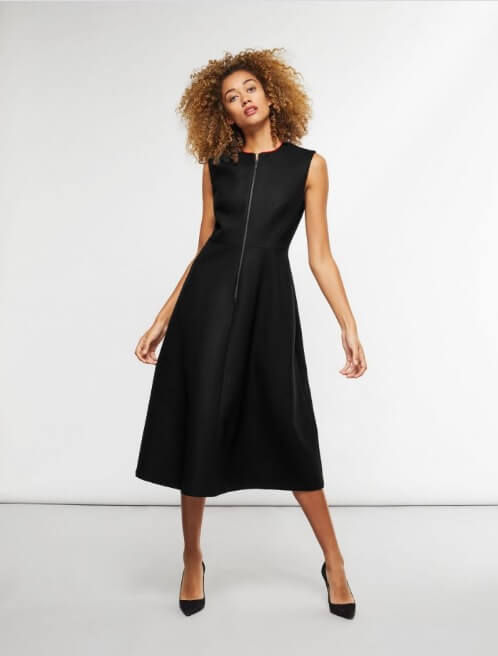How to Choose the Right Heels for Your Dress

You have a dress and some shoes that individually look amazing, but when you put them together the results are not so great. Find out how to choose the right heels for different kinds of dresses!
Although the occasion is what should define your choice of outfit and the shoes that will go with it, we’ll give you some indications that will help you make the best decision.
Each garment requires a certain type of footwear
Who dares to doubt, for example, that sportswear can be combined with sneakers for sports? Well, there are exceptions, such as the fashion that’s set on the catwalks. In this case, their characteristic innovative and provocative spirit invites you to combine sportswear with heels, for example.
Heels can make a garment more eye-catching and elegant. They also help to slim the figure by making a person look taller.
All in all, it can sometimes be a dilemma to choose the right heels or platforms when you want to wear a dress.
Every woman needs the right heels for her dress
Remember that there ‘s a wide variety of dresses: Long, short, wide or tight. And, depending on the fabric, there are summer or winter dresses.
At the same time, we must take into account that not all women wear the same type of sandal or shoe. So, depending on the age, physical condition, and anatomy of each woman, she’ll need to choose a shoe with a certain type of heel.
In fact, an article published in 2017 by the Pontifical Bolivarian University admitted that it’s not healthy for all women to wear the same type of heel; as it can be detrimental to their health.
What’s the key, then?
The key is to opt for the heels that make you feel more comfortable and that highlight you. Without forgetting, of course, to respect the social norms in relation to the type of event, place, weather, and season of the year.
Here are some tips that you can use as a guide.
The right heels for long dresses

It’s also good to wear heels or platforms that will allow you to walk easily, without stepping on your dress.
The best choices are:
- Sandals with a bit of height, if you don’t like heels. That way, you’ll still avoid stepping on your dress.
- If your dress is patterned, then your shoes should preferably be a single color. However, if you’re wearing a solid color dress you can choose heels, sandals, or platforms with some shiny detail or ornament.
- The more elegant the dress, the thinner your heels should be. This will add a touch of sophistication.
- If you have very broad calves, heels or sandals with straps that tie around the ankle or leg are not recommended.
Whatever the case may be, you should avoid wearing flat shoes with long dresses.
Short dresses

There are also many different heel designs for short dresses. However, like with long dresses, you need to you take into account your height, the shape of your calves, and of course, how short the dress is.
The best choices are:
- Tall, thin heels. Generally, heels lengthen your legs and flatter your figure and attire.
- You can also play with the width of the heel. The wider your heels is, the more casual and cheerful your outfit will look.
- Platforms are another good option to show off short, loose, flowy dresses.
- Closed shoes with thin heels, like stilettos, are a good choice for dresses that hug your figure.
- Another option you can choose with this type of dress is wedges.
- Cone heels: Heels shaped like an inverted cone with more inclination in the back part.
The right heels for asymmetrical dresses
Dresses that are short in the front and long in the back look (hi-lo) are perfect with a good pair of sandals. They let you show off your legs, and you can experiment with different heights.
The best choices are:
- Wedge sandals
- Platforms made from a light material
- Sandals with a high, thin heel
Depending on the footwear chosen, this is how the dress in question will look. A high and very thin-heeled, for example, will give the outfit a more elegant look.
On the other hand, espadrille platforms will give the outfit a much more informal or casual look.
Medium-length dresses

The brilliant thing about these dresses is that you can show your legs without revealing too much. They have a cut below the knee and above the calf, and they’re one of the most common dresses for both formal and informal events.
The heels to use are:
- Stilettos with pointed toes and a high thin heel. They slim down your figure.
- Platforms: casual and comfortable.
- If it’s an informal event you can wear low heels.
- High boots with thin heels can look very sexy.
You may also be interested in: How to Clean Leather Shoes: 5 Useful Tips
Precautions about prolonged use of heels
Remember to take a pair of shoes with you when you leave the house in case the heels start to hurt you.
Researchers are currently proposing different alternatives for comfortable heels that don’t affect your health. However, if you feel prolonged discomfort while wearing heels, remember to consult a podiatrist to solve this problem.
We hope these tips have helped you to get the right combination, and remember that the most important thing is to feel comfortable with everything you wear.
All cited sources were thoroughly reviewed by our team to ensure their quality, reliability, currency, and validity. The bibliography of this article was considered reliable and of academic or scientific accuracy.
- Barnish, M. S., & Barnish, J. (2016). High-heeled shoes and musculoskeletal injuries: a narrative systematic review. BMJ open, 6(1), e010053. https://www.ncbi.nlm.nih.gov/pmc/articles/PMC4735171/
- Lewis DMG, Russell EM, Al-Shawaf L, Ta V, Senveli Z, Ickes W, Buss DM. (2017). Why Women Wear High Heels: Evolution, Lumbar Curvature, and Attractiveness. Front Psychol. 13;8:1875. https://www.ncbi.nlm.nih.gov/pmc/articles/PMC5693914/
- Malick, W. H., Khalid, H., Mehmood, Z., & Hussain, H. (2020). Association of musculoskeletal discomfort with the use of high heeled shoes in females. JPMA. The Journal of the Pakistan Medical Association, 70(12(A)), 2199–2204. https://pubmed.ncbi.nlm.nih.gov/33475598/
- Masaryk, R., Synak, N., & Belišová, M. (2022). Is wearing high heels a female mating strategy? Revisiting the original study using qualitative methods. Frontiers in psychology, 13, 938916. https://www.ncbi.nlm.nih.gov/pmc/articles/PMC9580400/
- Weon, J. H., & Cha, H. G. (2018). The influence of high heeled shoes on balance ability and walking in healthy women. Journal of physical therapy science, 30(7), 910–912. https://www.ncbi.nlm.nih.gov/pmc/articles/PMC6047962/
This text is provided for informational purposes only and does not replace consultation with a professional. If in doubt, consult your specialist.








